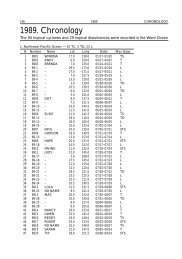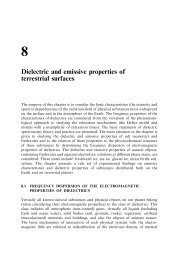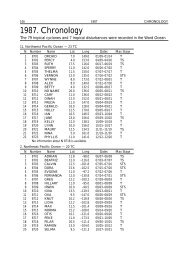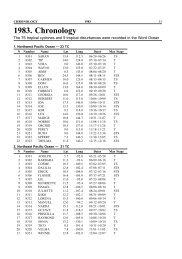Программа и тезисы докладов - Институт космических ...
Программа и тезисы докладов - Институт космических ...
Программа и тезисы докладов - Институт космических ...
You also want an ePaper? Increase the reach of your titles
YUMPU automatically turns print PDFs into web optimized ePapers that Google loves.
elecTroMagneTic ulF-elF band diSTurbance exciTaTion<br />
in The upper ionoSphere by The ThunderSTorM acTiviTy<br />
V. A. Pilipenko<br />
Space Research Institute of Russian Academy of Sciences (IKI RAN), Moscow, Russia<br />
Various aspects of thunderstorm electric discharge effect on the near-Earth<br />
space are examined. Theoretical estimation of thunderstorm excitement of MHD<br />
structures in Hz band in Alfven resonator and magnetosonic waveguide in the upper<br />
ionosphere are provided. The numerical simulation results of Schumann resonance<br />
‘leakage’ onto the ionosphere altitudes. The study of the mechanisms of impulse<br />
connection between the atmosphere and the magnetosphere in ULF-ELF band by<br />
micro-satellites, low-altitude spacecraft and surface registration systems of lightning<br />
discharges is discussed.<br />
daTa recorded by deMeTer during inTenSe ThunderSTorMS<br />
M. Parrot<br />
LPC2E/CNRS, Orléans, France<br />
DEMETER was a 3-axis stabilized Earth-pointing spacecraft launched on<br />
June 29, 2004 into a low altitude (~710 km) polar and circular orbit that was subsequently<br />
lowered to 650 km till the end of the mission in December 2010. The orbit<br />
was nearly sun-synchronous with an ascending node at ~22.30 LT in the night<br />
sector and a descending node at ~10.30 LT during day-time. DEMETER measured<br />
electromagnetic waves all around the Earth except in the auroral zones (invariant<br />
latitude >65°), then the data files are organized by half-orbit. The frequency range<br />
for the electric field was from DC up to 3.5 MHz, and for the magnetic field from<br />
a few Hz up to 20 kHz. At its altitude, the phenomena observed on the E-field and<br />
B-field spectrograms recorded during night time by the satellite are mainly dominated<br />
by whistlers. But whistlers are also observed during day time when the satellite<br />
is right above the thunderstorms. On one hand, we have searched for the more<br />
intense whistlers which must correspond to the more powerful lightning strokes<br />
occurring below DEMETER. These intense lightning strokes are generally associated<br />
with TLEs (Transient Luminous Events). Maps are shown. On the other hand,<br />
a search has been done to check if this intense lightning activity is able to perturb<br />
the electron and ion densities at the satellite altitude.<br />
35

















